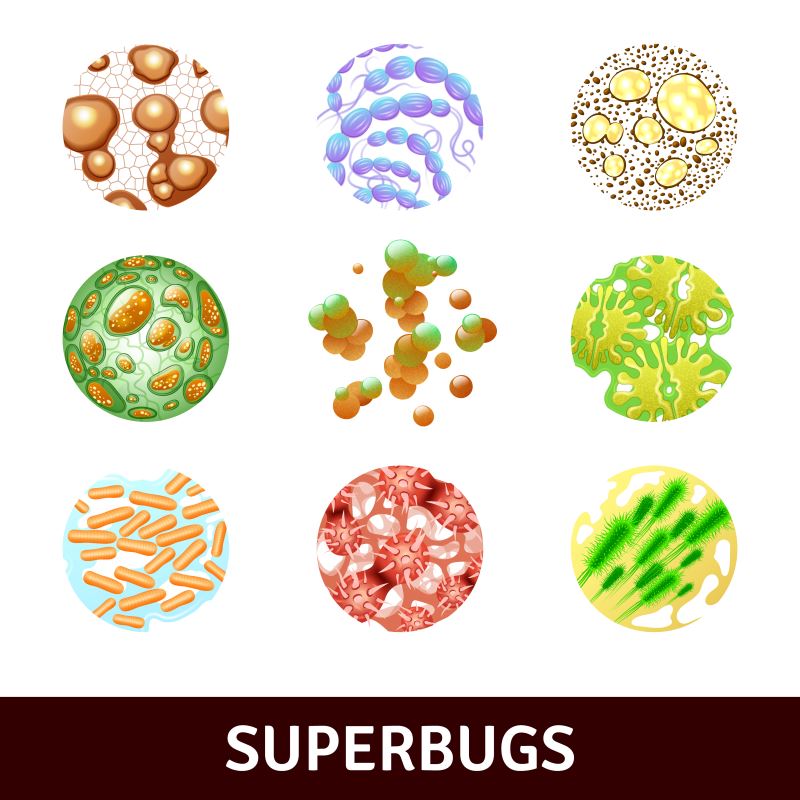Over 10 years experience of Traceability Solutions

By pharmatrax
Category: News
 No Comments
No Comments
They are bacteria that become resistant to antibiotics. Bacteria evolve and develop mutated genes that allow them to grow even when exposed to very high concentrations of antibiotics.
MRSA, Methicillin Resistant Staph Aureus is one common example of a superbug that has become very difficult to treat with common antibiotics in the penicillin family.
One type of bacteria called CRE (Carbapenem-Resistant Enterobacteriaceae) has been dubbed “nightmare bacteria” by the US Center for Disease Control and Prevention as there are very few drugs left to treat it. Among other countries, this bacteria has been reported in Pakistan.
Bacteria mutate because people are not using antibiotics in the right way. Many people stop antibiotic use after they feel better instead of completing a course. This leaves a few bacteria in the body that still linger on and eventually develop resistance to the antibiotics. Also taking antibiotics when it isn’t necessary, such as for a sore throat or sinus infection which gets better without antibiotics increases bacterial resistance.
More than half of all antibiotics manufactured in the world are given to animals like cattle and chickens. But when they excrete antibiotics, the drugs are not broken down and enter the environment and cause antibiotic resistance.
To tackle this, the FDA has come up with a plan to phase out antibiotic use in farm animals.
Most of the antibiotics we have were developed between the 1930s and 1960s. That was the golden age of antibiotic development. New classes of antibiotics (more than 20) were discovered and funding was pouring into research and development from government and from the industry.
However, since then, only a couple of new classes of antibiotics have been developed (Oxazolidinone and Cyclic Lipopeptide) and it is feared that we are running out of new antibiotics to use.
Compared to the 20th century, fewer major pharmaceutical companies are focusing on antibiotic discovery and those that are mostly developing analogues rather than searching for new classes.
Analogues are more feasible to make because the risk of toxicity is lower than a new class (the drug can pass through Phase 1 clinical trials more easily). They are also less costly.
There is scope for analogues in some classes like Cephalosporins but they can only buy time.
There is a limit to the number of analogues that can be made from a single chemical core. Eventually it will become too difficult or too expensive to make another analogue as resistance can arise to analogues within two years of being produced.
Some bacteria become resistant slowly while other faster. Penicillin was developed for medical use in early 1940s but penicillin resistant strains of Staphyloccus Aureus turned up by 1955, while strains of Neisseria Meningitidis still show reduced susceptibility to penicillin.
Gram negative bacteria are particularly troublesome superbugs.
Mostly antibiotics have been developed through a natural product. For example Penicillin was discovered accidentally when Alexander Fleming noticed that a mold had developed in a Petri dish of bacteria he had left for some time and notice the clear bacteria free ring surrounding the mold. He won the Nobel Prize in Medicine in 1945 for his discovery.
Natural sources are being searched to find the next classes of antibiotics required to support modern medicine over the next century.
Researchers are looking into mammals, reptiles, and plants including Actinomycetes in the deep ocean from which the antibiotic Abyssomicin has been developed.
New pathways in bacteria are being searched by mapping their genome which can be potentially targeted by inhibitors.
New classes of antibiotics are urgently required to keep up with the emergence of bacterial resistance because, as it is speculated, if the current rate of antibiotic development continues, as early as within 50 years, getting a bacterial infection could become a death sentence.
Find out more about the superbugs at:
https://www.cdc.gov/drugresistance/biggest-threats.html
https://www.health.harvard.edu/blog/superbugs-real-rise-antibiotic-resistant-bacteria-201607069856
REFERENCES
1 https://www.ncbi.nlm.nih.gov/pubmed/20705517
2 https://www.fda.gov/consumers/consumer-updates/phasing-out-certain-antibiotic-use-farm-animals#voluntary
3 https://www.ncbi.nlm.nih.gov/pubmed/19035777
4 https://www.nationalgeographic.com/magazine/2018/09/embark-essay-antibiotic-resistant-bacteria-evolution/